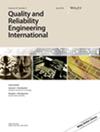How fair is machine learning in credit lending?
IF 2.2
3区 工程技术
Q3 ENGINEERING, INDUSTRIAL
引用次数: 1
Abstract
Machine learning models are widely used to decide whether to accept or reject credit loan applications. However, similarly to human‐based decisions, they may discriminate between special groups of applicants, for instance based on age, gender, and race. In this paper, we aim to understand whether machine learning credit lending models are biased in a real case study, that concerns borrowers asking for credits in different regions of the United States. We show how to measure model fairness using different metrics, and we explore the capability of explainable machine learning to add further insights. From a constructive viewpoint, we propose a propensity matching approach that can improve fairness.机器学习在信用借贷中的公平性如何?
机器学习模型被广泛用于决定是否接受或拒绝信用贷款申请。然而,与人工决策类似,机器学习模型可能会对特殊群体的申请人产生歧视,例如基于年龄、性别和种族的歧视。在本文中,我们旨在了解机器学习信用贷款模型在实际案例研究中是否存在偏差,该案例涉及在美国不同地区申请贷款的借款人。我们展示了如何使用不同的指标来衡量模型的公平性,并探索了可解释机器学习的能力,以增加更多的洞察力。从建设性的角度来看,我们提出了一种倾向匹配方法,可以提高公平性。
本文章由计算机程序翻译,如有差异,请以英文原文为准。
求助全文
约1分钟内获得全文
求助全文
来源期刊
CiteScore
4.90
自引率
21.70%
发文量
181
审稿时长
6 months
期刊介绍:
Quality and Reliability Engineering International is a journal devoted to practical engineering aspects of quality and reliability. A refereed technical journal published eight times per year, it covers the development and practical application of existing theoretical methods, research and industrial practices. Articles in the journal will be concerned with case studies, tutorial-type reviews and also with applications of new or well-known theory to the solution of actual quality and reliability problems in engineering.
Papers describing the use of mathematical and statistical tools to solve real life industrial problems are encouraged, provided that the emphasis is placed on practical applications and demonstrated case studies.
The scope of the journal is intended to include components, physics of failure, equipment and systems from the fields of electronic, electrical, mechanical and systems engineering. The areas of communications, aerospace, automotive, railways, shipboard equipment, control engineering and consumer products are all covered by the journal.
Quality and reliability of hardware as well as software are covered. Papers on software engineering and its impact on product quality and reliability are encouraged. The journal will also cover the management of quality and reliability in the engineering industry.
Special issues on a variety of key topics are published every year and contribute to the enhancement of Quality and Reliability Engineering International as a major reference in its field.

 求助内容:
求助内容: 应助结果提醒方式:
应助结果提醒方式:


